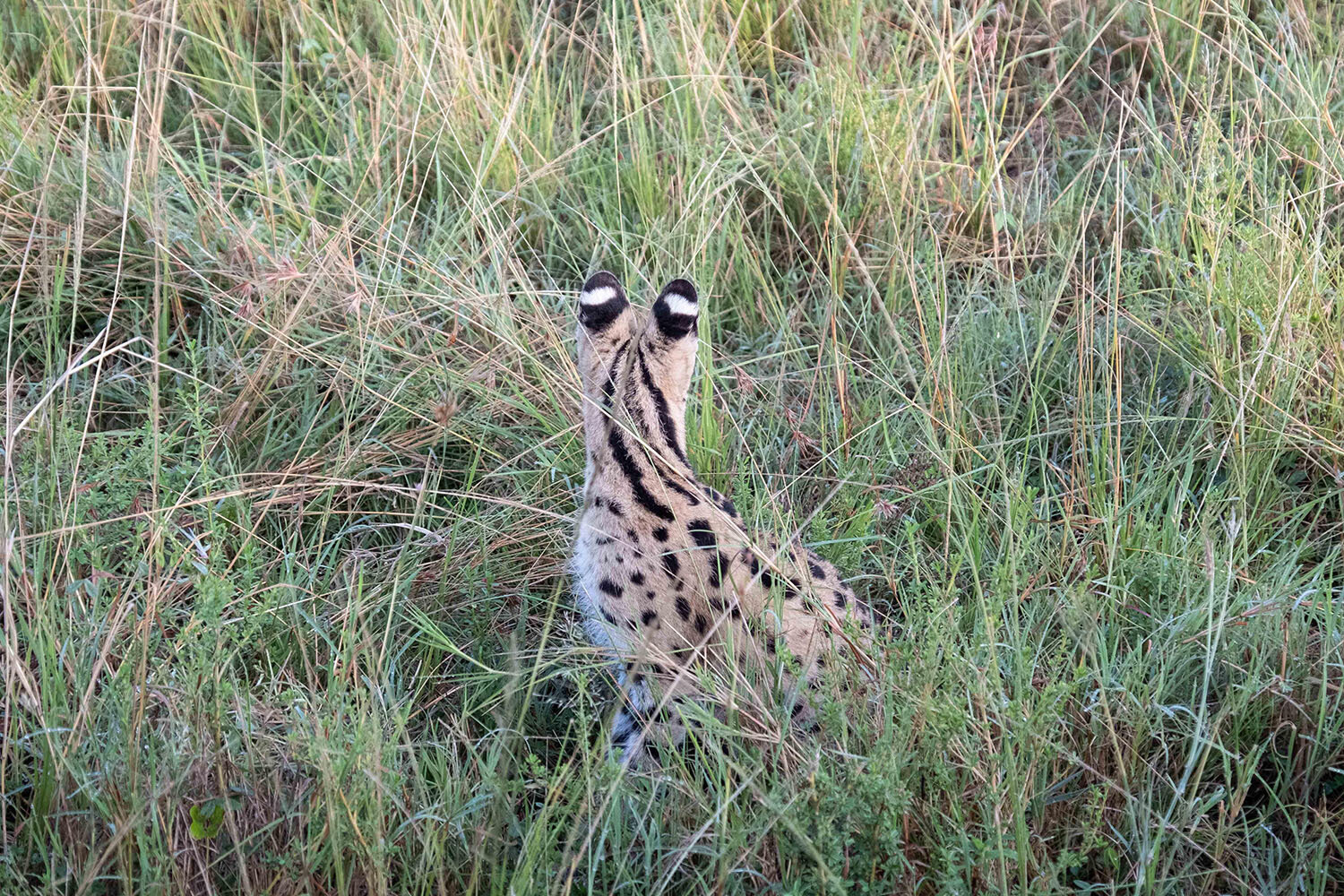Meet the Serval—Wildcats Belong in the Wild
The sound of doves calling accompanied by the grunts of hippos as they splashed into the river after a night of grazing, greeted me in the predawn light. I grabbed my camera gear for my final game drive after a long weekend in the Maasai Mara. We had a couple of hours before I had to leave camp to make my return flight to Nairobi. I take advantage of every opportunity possible to go on a game drive. I figure I can sleep in when I get home.
My guides, Dominic Maitai and Joseph Mutemi, met me at the truck. A brilliant sunrise greeted us as we emerged from the forest where our camp was tucked high on the banks of the Mara River. Early morning light revealed survivors of another night on the savannah. I spotted a hyena heading home and waterbucks ahead. I wondered what drama unfolded here the previous night.
Dominic made a sharp turn and headed into the tall grass. I leaned out of the truck searching in vain for a sign of wildlife. “Serval!” whispered Dominic. Joseph pointed, nodding in agreement. I strained to look, wishing I had the experienced spotting skills of the Maasai guides.
Finally, I saw some movement. A spotted cat with long legs like a miniature cheetah, slipped by like an elusive ghost. A serval! After dozens of game drives this was my first sighting of this graceful little feline. The serval emerged and crossed the road giving me full view of its lanky body and short tail before disappearing again into the grass on the far side of the road.
If I didn’t know where to look, I would have missed it completely!
A couple of other safari vehicles pulled up nearby sensing we had found something. The serval is relatively common in sub-Saharan Africa, however, it’s small size, camouflage markings and solitary lifestyle mean it is not easily seen. The other vehicles did not stick around to watch. Tourists are generally keener to see the larger iconic animals like elephants, giraffes and zebras. If this is your first safari that is understandable. I was happy to stay focused on the serval, eager to learn more, hoping it might come closer.
The marsh area near our camp was a perfect habitat for rodents, top on the menu for the diminutive serval. Its long legs and mobile toes enable it to leap and pounce on its prey. In fact, it is such a good leaper and pouncer this little cat easily ambushes small animals in the grass and is known to even snatch a bird out of midair! They can leap 3m up and 4m forwards! The serval’s big ears act like radar, detecting the tiniest movement of prey such as mice, insects, birds and even antelope lambs. Like many wild cats, it has white spots on the back of its ears, giving the appearance it has eyes in the back of its head—360 degree surveillance!
We spent at least an hour observing this elegant cat. It came closer as time went by, ignoring our presence completely. Joseph grabbed my phone to take a picture of the hierarchy of observers—Joseph watching me, watching the serval, watching for prey.
I was dismayed to learn that the relatively small size of a serval makes it a popular exotic pet. What is it about wild animals that humans want to keep them as pets? Although servals are definitely more manageable than owning a big cat like a lion or tiger, there are practical and ethical reasons they should be left in the wild. People forget that fluffy serval kittens grow up into cats with wild instincts imprinted from birth. Cross breeding them with domestic cats is not an ethical or viable alternative either. Often domestic serval cats end up in animal shelters because their owners cannot manage them.
Wild animals belong in the wild. All the more reason to make sure we maintain wild spaces large enough to support nature’s diversity. The graceful and elusive serval cat with its appealing charcoal black spot of a nose deserves to have its place in the ecosystem. When we take care of nature, nature takes care of us.
Here’s an African cat video for you!









